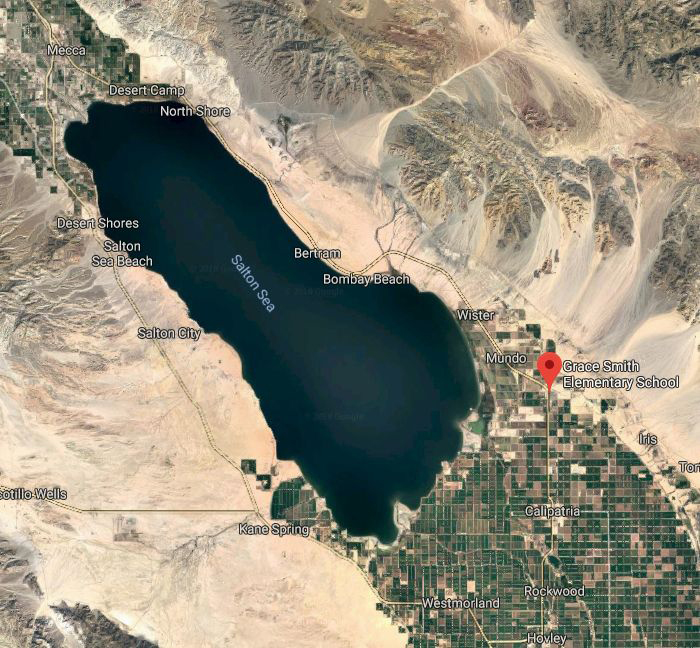
In the southeast corner of CA in a small desert community near the Salton Sea, Mr. Douglas Kline, principal of Grace Smith School in Niland, CA, walked outside and was greeted with the customary gust of dust filled wind blowing through the school’s campus.
“All the contaminants in the wind are blown across our playground regularly," said Kline. "From January through April it’s every day,”
Grace Smith School is one of 5 schools in the southern region of the Salton Sea that are participating in the Children’s AIRE Study (Assessing Imperial Valley Respiratory Health & the Environment). The study is a collaborative research project led by USC Division of Environmental Health researchers and local community organization, Comite Civico del Valle. The AIRE study is looking at the effects of the air quality and potential impacts of the shrinking of the Salton Sea on children’s respiratory health.

In September of 2017, after researchers initially surveyed 1st and 2nd students and families about their respiratory health, USC investigators Jill Johnston and Shohreh Farzan met with Kline and reported the survey results. The rate of asthma among the group of students at Grace Smith was 16%, compared to 12.5% across the state of CA.
With asthma rates of his students being higher than normal, Kline decided to share the USC data report with his local Imperial Valley Air Pollution Control District Officer, Matt Dessert. “I saw the data and it supports the fact that asthma is high in the Imperial Valley. I thought it was important to share it with the staff at the Air District,” said Kline.
The research data on children’s respiratory health, including their higher rate of asthma made a significant impression on Mr. Dessert of the APCD. “He asked me if our school would like to have an air filtration system installed in our gymnasium at no cost to us,” said Kline. “Of course I agreed!” The air filtration system for the school’s gymnasium, that is heavily used by students throughout the school day for P.E. classes and for after school programs, will be installed by the end of the year by Cal Energy, a geothermal plant located in Niland. “There will be no out of pocket costs to our school. Between the air district and Cal Energy, the costs of replacing the filters will be covered for the life of the system,” said Kline. He hopes the air filtration system will have a positive impact on the health of his students.
Grace Smith students rely heavily on the gymnasium for their recreational activities as well as school events. Kline reported that students do all recreational activities in the gymnasium with the exception of morning and lunch recess times spent on the playground when there are no bad air days or heat over 110 degrees. “We realize kids love to play outside and we give them those chances,” said Kline. Between the extreme heat and bad air days, the school is able to provide a controlled climate and a variety of recreational activities in the gymnasium for students, teachers and after school programs to function.
Learn more about the USC AIRE Study.
The USC AIRE Study is funded by NIEHS grant 1R01ES029598-01
By Wendy Gutschow
School Principal Uses Research Data to Protect Children’s Health in The Imperial Valley was originally published on the University of Southern California website.